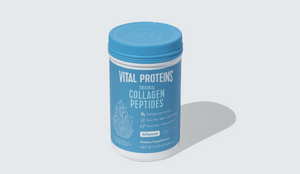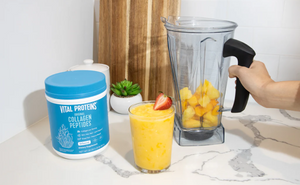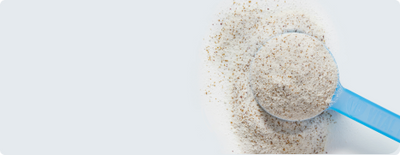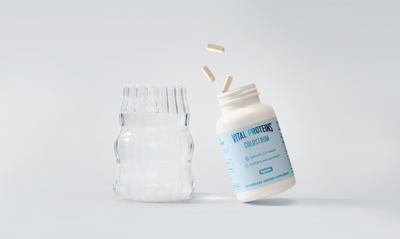By: Kristin Bugden
If you’re not familiar with Lauren Roxburgh, we are happy to get you acquainted because she’s a force to be reckoned with in the wellness world. Lauren is a bestselling author, internationally renowned educator and speaker and frequently dubbed “The Body Whisperer." She’s an expert on all things fascia, alignment, the mind-body connection and movement medicine and regularly works with many influential people including Hollywood’s A-List, top athletes and renowned surgeons.
We were lucky to recently speak with Lauren about her new book, THE POWER SOURCE, which takes a look at several common ailments that many of us face and how we can alleviate these through unlocking “power centers” in our bodies with one being our pelvic floor (an area many of us don’t realize carries so much importance). Read on to learn more in our Q&A below.
Lively's Interview with Lauren Roxburgh

Lively: Can you synthesize for readers in a couple sentences what you mean when you refer to our pelvic floor as a power source?
Lauren Roxburgh: As I discuss in my new book, THE POWER SOURCE, simply put, the pelvic floor is the ultimate power source because it's so deeply connected to a multitude of areas in the body: the nervous system, how we deal with stress, our true inner physical strength and even our emotions. When it comes to looking at stress from a holistic standpoint, I feel pelvic floor health is a real game-changer since it is so deeply connected to how we respond to stress. After years of working with clients, I've seen that the health of the pelvic floor has a "trickle down" effect, and it's truly transformative when you can take the time to awaken, integrate, transform and strengthen this incredibly important part of the mind and body.
L: What are some signs one might have an imbalanced pelvic floor?
LR: Some signs include lower back pain, pelvic pain, incontinence issues, lack of core strength and connection, and also pain during sex or lack of pleasure between the sheets. Other signs include chronic stress, tension in the gut, shoulder and jaw pain and even anxiety since the pelvic floor is so deeply connected to the nervous system. Often, if you are unable to relax, surrender, "turn off" and destress, then your pelvic floor could use some attention.

L: We recognized that a central theme of your book addresses how we cope with stress. What are a few tips to help us try to avoid constant “survival mode” and compressing all that tension into our bodies?
LR: One of the first things we can do to address stress and break the constant "survival mode" or fight-or-flight response, is to notice how your body responds to stress. When a stressful situation arises, do you tense up your neck and shoulders or clench your jaw? Ball up your fists? A lot of the time, people are subconsciously clenching their pelvic floors when they're feeling stressed without even knowing it. Once you're more aware of where you hold stress, it's important to be mindful and work to break the automatic response when you can. For example, the next time someone cuts you off in traffic, try breathing deeply, softening your tissues and awakening an awareness of this bearing down. I recommend doing a body scan, my custom guided visualizations, movement medicine moves on the Body Sphereand learning how to avoid the over tensing up or clutching.
L: As you note throughout your book and have mentioned above, the pelvic floor is very much connected to how we deal with stress. What are some of the benefits one can see by working to heal their pelvic floor and in turn taking better control of their stress responses?
LR: There is more to the pelvic floor, or as I like to call it, the pelvic corethan the physical structure — there is an emotional component, too. The pelvic floor is located in an area of your body referred to as the root. When you are connected to your pelvic floor (and it is resilient/strong), it is like an "on/off" switch for the stress response in the body because it's so closely connected to the nervous system (the network that runs up and down the spinal cord and begins at the pelvic floor area). This area is also considered the Root Chakra in Eastern tradition and is connected specifically to fear.
When we’re able to connect with our pelvic floor and release stress and blocked fears and emotions, we can live in a more balanced and joyful state.
It’s important to note that when it comes to strengthening your pelvic floor, there are misconceptions. Many people believe that a tight, toned pelvic floor is a strong pelvic floor. However, I teach my clients to want to create a more resilient pelvic floor instead. I like to use the word resilience because it makes me think of being able to expand and contract the muscles, tissue and energy. And strengthening the pelvic floor encourages us to create a more dynamic deep core, release tension and build graceful strength from the inside out. Some of the other benefits of healing the pelvic floor include increased flexibility, a flatter tummy and stronger core, a deeper enjoyment of intimacy, a more relaxed jaw, improved digestion and immunity and glowing skin.

L: Finally, we know that your book takes a look at several different tools/exercises that people can incorporate into their lives to help with alignment. What does it mean when one has achieved total body alignment and is it something we must constantly work on?
LR: Alignment is always a work in progress because we are human beings here in planet earth school, learning lessons daily. Plus, we’re also dealing with gravity which takes a toll on our skin, tissues, structure and energy. However, with that said, alignment feels like we’re on our path riding the waves of life with a sense of ease, graceful power and strength. It feels like coming home to your body and enjoying your life to the fullest. And just like mindfulness, it’s a daily practice of awareness, connection and choice. It’s really daily stress hygiene — just like you would exfoliate or floss daily — practicing daily alignment is necessary to thrive in our busy, fast lives.
Photos: @loroxburgh/Instagram













